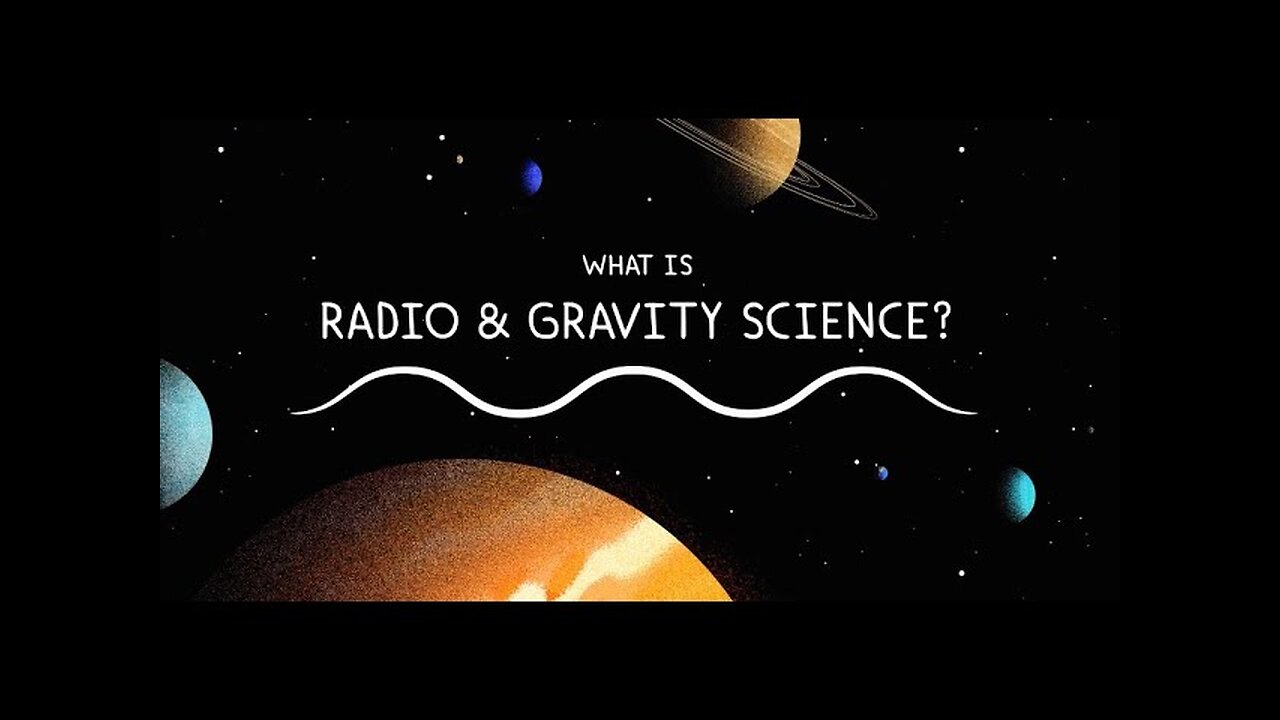Premium Only Content

How NASA Uses Gravity and Radio Waves to Study Planets and Moons
The Deep Space Network, NASA’s international collection of giant radio antennas used to communicate with spacecraft at the Moon and beyond, helps scientists and engineers use gravity and radio science experiments to learn more about our planetary neighborhood.
After reaching a spacecraft reaches its destination, it uses radio antennas to communicate with the Deep Space Network, which in turn transmits radio signals back to the spacecraft. Every spacecraft travels in a predetermined path emitting radio signals as it orbits around its target. Scientists and engineers can infer the spacecraft's location and how fast it's going by measuring changes in the spacecraft's radio signal frequency. This is made possible by the Doppler effect, the same phenomenon that causes a siren to sound different as it travels towards and away from you.
The Doppler phenomenon is observed here when the spacecraft and the Deep Space Network antenna move in relation to each other. Differences between the frequency of radio signals sent by the spacecraft as it orbits and signals received on Earth give us details about the gravitational field of a planetary body. For example, if the gravity is slightly stronger, the spacecraft will accelerate slightly more. If gravity is slightly weaker, the spacecraft will accelerate slightly less. By developing a model of the planetary body's gravitational field, which can be mapped as a gravitational shape, scientists and researchers can deduce information about its internal structure.
The Deep Space Network was developed by and is managed by NASA’s Jet Propulsion Laboratory (JPL) in Southern California. The antennas of the Deep Space Network are the indispensable link to robotic explorers venturing beyond Earth. They provide the crucial connection for commanding our spacecraft and receiving never-before-seen images and scientific information on Earth, propelling our understanding of the universe, our solar system and ultimately, our place within it.
JPL manages the Deep Space Network for the Space Communications and Navigation (SCaN) Program, based at NASA Headquarters within the Space Operations Mission Directorate
-
 54:57
54:57
Sean Unpaved
2 hours agoRodgers-Flacco TNF Showdown, CFB Week 8 Upsets, NFL Week 7 Edges, & Weekend Locks
15.9K -
 2:05:45
2:05:45
The Culture War with Tim Pool
22 hours agoWokeness Is Dying, Conservatives Are Winning & Taking Back Entertainment | The Culture War Podcast
137K59 -
 1:57:51
1:57:51
The Charlie Kirk Show
2 hours agoZelenskyy Gets to Know the King + Bolton Busted + NYC Showdown + AMA | Davis, McCoy | 10.17.2025
51.9K16 -

Neil McCoy-Ward
1 hour ago🚨 More Bank COLLAPSES Are On The Way... (AVOID These Banks!)
4.07K1 -
 2:07:06
2:07:06
Side Scrollers Podcast
3 hours agoDiaper Furry Streamer Gets ONLY ONE DAY Suspension + Hasan PLAYS VICTIM + More | Side Scrollers
17.1K6 -
 52:25
52:25
Steven Crowder
21 hours agoCAUGHT: Mamdani Campaign Admits Plans to Force NYPD to Defy ICE & Orchestrate Socialist Takeover
282K493 -
 1:50:53
1:50:53
Nikko Ortiz
3 hours agoNEW Army Boot Camp In 2025... |Rumble Live
17.4K1 -
 49:11
49:11
The Rubin Report
4 hours agoWatch Zohran Get Visibly Frustrated as His Fox Interview Backfires Spectacularly
39.5K33 -
 1:02:07
1:02:07
VINCE
5 hours agoBolton Busted In Poetic Fashion | Episode 149 - 10/17/25
187K132 -
 LIVE
LIVE
LFA TV
19 hours agoLIVE & BREAKING NEWS! | FRIDAY 10/17/25
1,880 watching